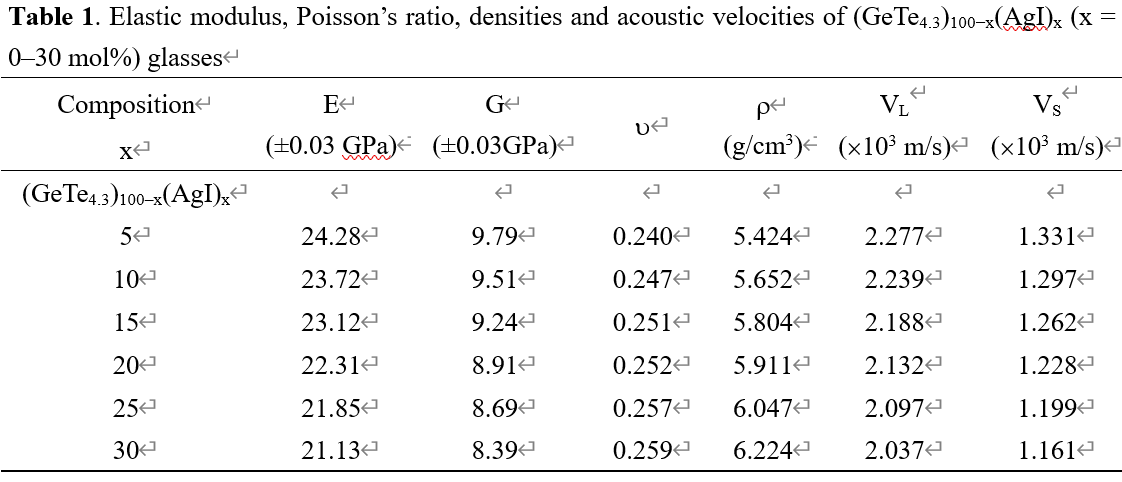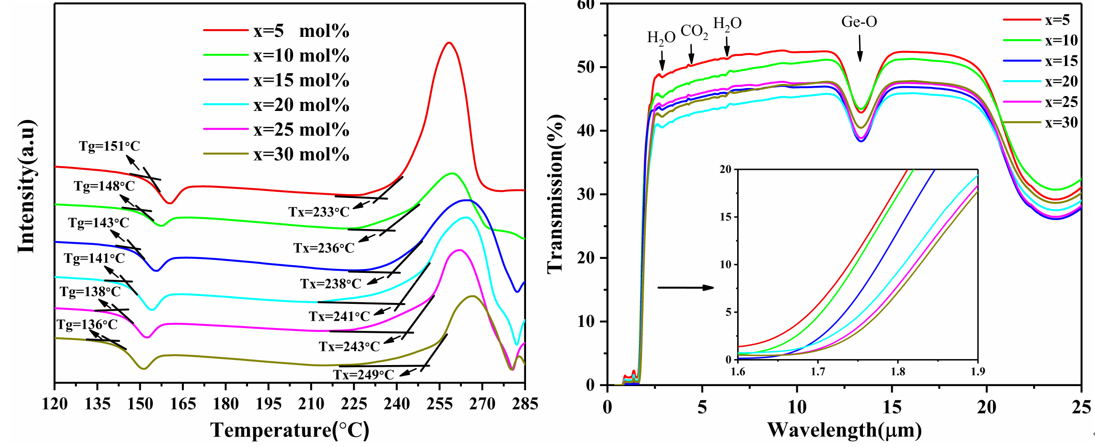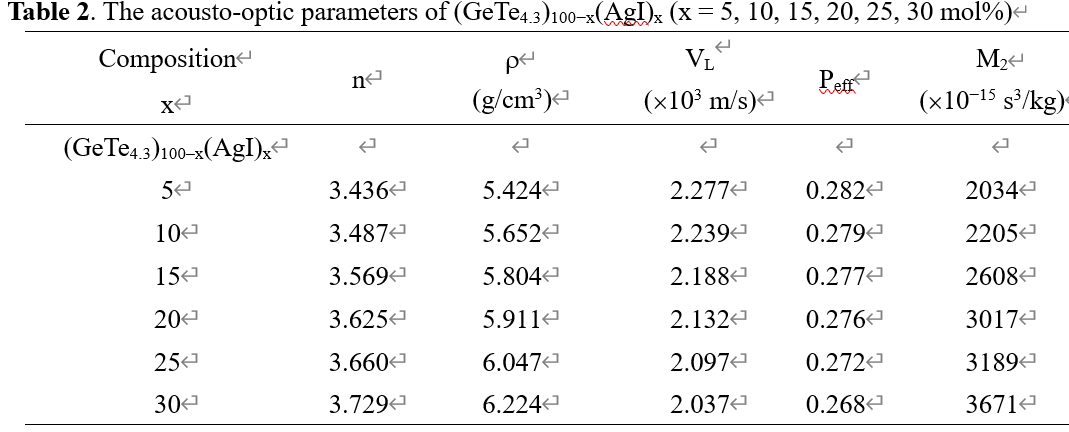Recently, Shengjie Ding (first author), a postgraduate student in our laboratory, and professor Shixun Dai (corresponding author) have published an article entitled “Novel acousto-optic material based on Ge-Te-AgI chalcohalide glasses” in Ceramics International (Ceramics International. 2021, 47 (9), 12072-12077. https://doi.org/10.1016/j.ceramint.2021.01.051).
The interaction between light wave and sound wave is one of the important phenomena that laser has broad application prospects in optical communication and information processing systems. At present, acousto-optic devices made using acousto-optic effects have been widely used in fields such as light intensity modulation, phase modulation, laser technology, and optical information processing technology. Materials suitable for constructing acousto-optic devices need to have high acousto-optic figure of merit (M2), low acoustic loss, high optical quality, good mechanical properties, thermal stability, etc. In addition, they should be easy to obtain and easy to manufacture, Cutting and polishing. Chalcogenide glasses exhibit great interest in the construction of AO materials owing to their attractive optical properties, which including high linear refractive index, better structural stability, and ultrabroad transparency window spanning from the visible to the far-infrared (IR). In addition, they are isotropic by nature, and easy to fabricate in large quantities with good optical uniformity via annealing operations. The current reports on the AO properties of chalcogenide glasses are mainly concentrated in the visible, near-IR and mid-IR bands. There are few reports on the application of far-IR chalcogenide glass AO materials, which is mainly restricted by the pursuit of high AO figure of merit (M2) of the materials by far-infrared AO devices. The current reports on the acousto-optic characteristics of chalcogenide glasses generally have the characteristics of large acoustic attenuation, poor thermomechanical properties, and concentrated in the mid-to-far infrared band. In this paper, A series of (GeTe4.3)100−x(AgI)x (x = 5, 10, 15, 20, 25, 30 mol%) chalcohalide glasses was prepared to investigate their potential in acousto-optic (AO) materials. Detailed thermal and optical properties of these glasses have been analyzed by DSC, XRD and FTIR. Meanwhile, refractive index, density, elastic modulus, acoustic velocity and attenuation, and the M2 were also reported. The results indicated that all these glasses presented a single glass transition temperature (Tg) and a single crystallization peak (Tx), and Tg decreases while Tx increases with the addition of AgI. X-ray power diffraction investigation showed the amorphous state of these synthesized glasses. They all have a wide transparent window from 2 to 20 mm, and acoustic attenuation was observed almost linearly proportional to the frequency at room temperature. Furthermore, refractive index and density increase, while acoustic velocity and elastic modulus decreases monotonously upon introducing AgI to GeTe4.3. The maximum refractive index (n = 3.729) and minimum acoustic velocity (V = 2.037 ´ 103 m/s) appeared in 70GeTe4.3–30AgI glass, thereby resulting in a maximum M2 of 3671 ´ 10−15 s3/kg at 10.6 mm. The outstandingly high M2 of this vitreous material make it attractive for far-infrared (FIR) AO modulators that require greater diffraction efficiency.


Left picture: DSC curves of (GeTe4.3)100−x(AgI)x (х = 0–30 mol%) glasses.
Right picture: Transmission spectra of (GeTe4.3)100−x(AgI)x (х = 0–30 mol%) glasses (The illustration shows the red shift of the shortwave cutoff edge).



